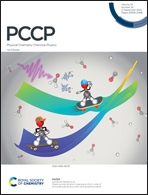Analysis of the ignition of hydrogen/air mixtures induced by a hot particle
Abstract
Understanding the ignition and explosion of hydrogen induced by a hot particle is crucial for the safety of hydrogen storage, transmission and utilization. In this paper, the ignition/explosion of hydrogen/air mixtures induced by a hot particle is investigated theoretically and numerically. Eigenvalue analysis is conducted for the radical-runaway ignition process in which a detailed reaction mechanism is considered. The governing equation for radical accumulation is converted into a rate-controlling ordinary differential equation (ODE). The ODE can be solved with the help of a hypothetical single-step reaction model, whose kinetic characteristics are related to the positive eigenvalue of the rate matrix constituted by relevant linear chain reactions. Based on the single-step reaction model, the critical ignition Damköhler number can be determined. Besides, transient simulations are conducted using in-house code A-SURF, in which detailed chemistry and transport are considered. The critical ignition temperatures predicted by eigenvalue analysis agree well with experimental data reported in the literature and present numerical results over a wide range of particle radii. The particle surface introduces temperature inhomogeneity in the ignition of a hydrogen/air mixture, which yields a Z-shaped curve of the explosion limit. The Z-shaped curve shifts to a higher temperature and pressure regime along the boundary of the second explosion limit when the particle size decreases. The increasing difficulty in the ignition can be attributed to the strengthening of radical diffusion as the particle becomes smaller. Compared to a homogeneous ignition system, the presence of a particle surface can alter the relative impacts among key chain reactions. The effects of preferential diffusion between heat and mass transport (i.e., Lewis number effect) and equivalence ratio on the Z-shaped curve of the explosion limit are assessed and interpreted. The present study provides useful insights into the kinetics and transport involved in the ignition of hydrogen/air mixtures by a hot particle, which is closely related to the fire/explosion safety of hydrogen.



 Please wait while we load your content...
Please wait while we load your content...